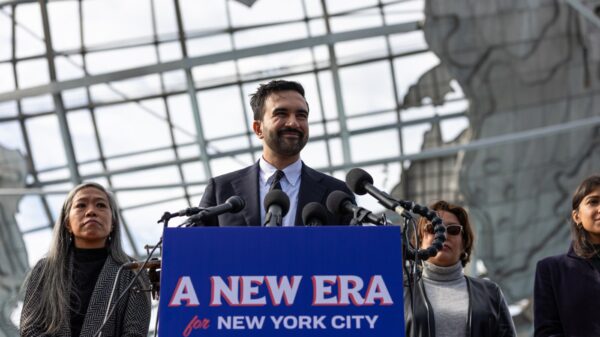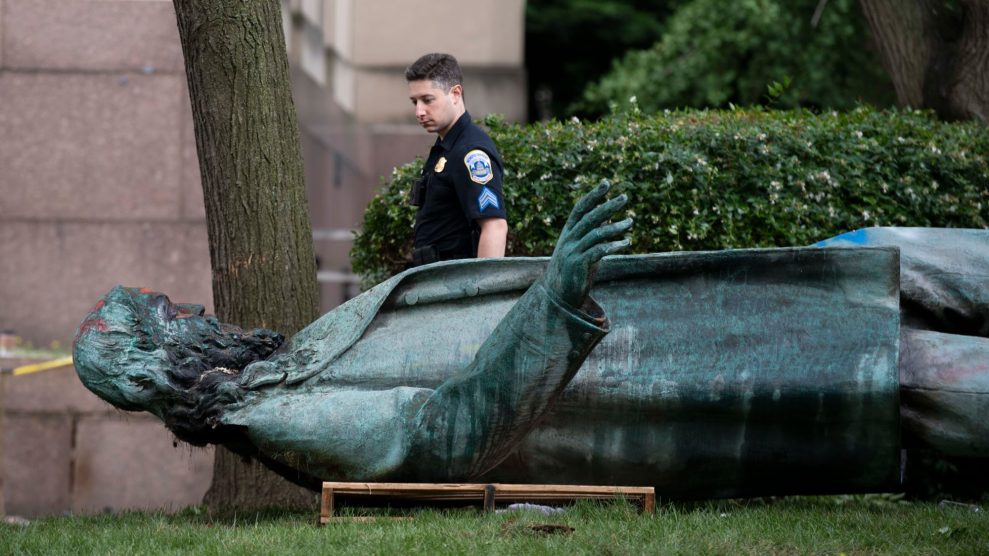The National Park Service (NPS) announced on Monday that it will restore and reinstall a statue of Confederate General Albert Pike in Washington, D.C., after it was toppled by protesters in June 2020. This decision comes as part of President Donald Trump‘s broader efforts to reshape the narrative surrounding American history.
The statue, which was originally authorized by Congress in 1898, was taken down during protests sparked by the murder of George Floyd by Minneapolis police. The NPS described Pike’s statue as a tribute to his “leadership in Freemasonry,” but it notably overlooks his role as a Confederate general who fought to maintain slavery and was reportedly linked to the Ku Klux Klan in the late 1860s.
Video footage from the protests shows demonstrators successfully pulling down the statue while cheering, an act Trump later condemned as “a disgrace to our Country!” The removal of the Pike statue was part of a larger trend in 2020, during which nearly 100 Confederate monuments were taken down across the United States, according to a 2021 survey by the Southern Poverty Law Center (SPLC). A report released by the SPLC earlier this year indicated that over 680 Confederate monuments remain in place nationwide.
In its justification for reinstating the statue, the NPS referenced two of Trump’s executive orders: “Making the District of Columbia Safe and Beautiful” and “Restoring Truth and Sanity to American History.” The NPS stated that the statue has been in storage since its removal and is currently undergoing restoration, with plans for reinstallation expected by October 2023.
Requests for comments from representatives of the NPS and the White House concerning the restoration costs or the historical context of Pike’s actions went unanswered on Tuesday.
Eleanor Holmes Norton, D.C.’s non-voting Democratic delegate to Congress, responded to the announcement by stating her intention to reintroduce legislation aimed at permanently removing the statue. “The decision to honor Albert Pike by reinstalling [his] statue is as odd and indefensible as it is morally objectionable,” she said. “A statue honoring a racist and a traitor has no place on the streets of D.C.”
This recent decision is part of a larger pattern in Trump’s administration, which has sought to revise the portrayal of American history to align with a narrative that appears more favorable to certain political ideologies. He has criticized institutions like the Smithsonian for what he deems the influence of a “divisive, race-centered ideology,” leading to the removal of references to his two impeachments from an exhibit at the National Museum of American History, though these references are set to be restored shortly.
In addition to these actions, Trump has made moves to declare English the official language of the United States and directed the U.S. Army to restore names of bases that had previously honored Confederate leaders. His administration has also taken steps to remove mentions of gender non-conforming and transgender individuals from NPS materials.
The recent announcement regarding the Pike statue exemplifies Trump’s ongoing efforts to reshape American societal values and historical narratives. As he continues to push for a vision of a colorblind and virtuous society, critics argue that these actions threaten to ignore significant elements of the nation’s past, including the realities of systemic racism and oppression.
This situation underscores a broader conflict over how history is remembered and honored in America, raising questions about the implications of reinstating such a controversial figure in the nation’s capital.





































































